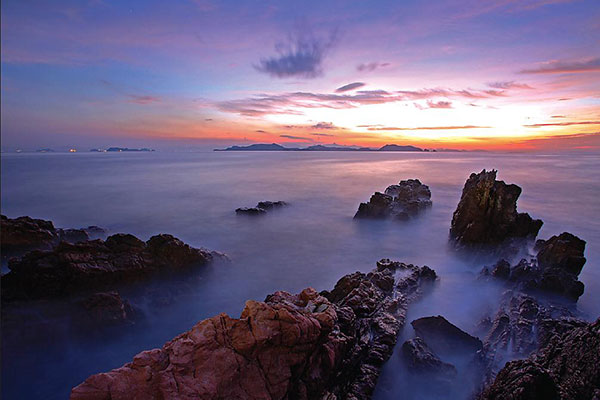
With breathtaking natural views, Dapeng Peninsula, located to the east of Shenzhen, is undergoing rapid development in its green industries.[Photo provided to China Daily]
Hong Kong director Stephen Chow’s latest film is casting the scenic Dapeng Peninsula, located in Shenzhen, Guangdong province, into the limelight.
The Mermaid, a romantic comedy that calls attention to marine conservation, has been a smash in theaters across the country on Feb 8, the first day of the Lunar New Year, breaking China’s box office record with nearly 3.5 billion yuan ($541.4 million) in ticket sales.
In the movie, the heroine, who happens to be a beautiful mermaid, lives in a mysterious but luxuriant forest surrounded by a crystal-clear sea and steep cliffs adorned with a waterfall.
Chow shot these scenes in Dapeng Peninsula, located in eastern Shenzhen.
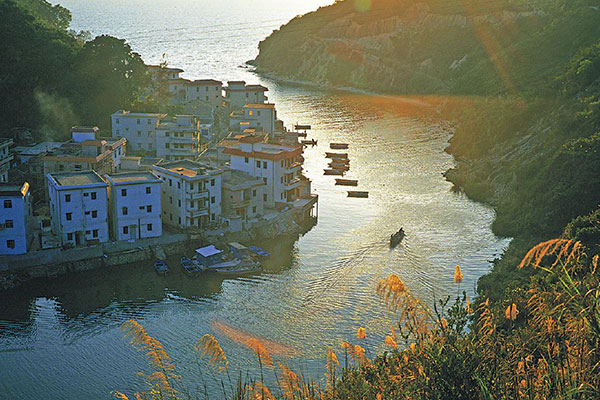
With breathtaking natural views, Dapeng Peninsula, located to the east of Shenzhen, is undergoing rapid development in its green industries.[Photo provided to China Daily]
The peninsula has a land area of about 302 square km, almost one-sixth of Shenzhen. About 76 percent of this land area is covered in forests.
On three sides of the peninsula is 305 sq km of water. Dapeng makes up half of the city’s coastline, where 54 out of the city’s 56 beaches are located.
The peninsula’s beaches are the best option for people visiting or living in Shenzhen, the fourth-largest city on the Chinese mainland by gross domestic product, to spend a weekend with their family and friends.
In the mountains of Dapeng, visitors can ride their bikes, hike, fish, or swim while breathing in the fresh air.

With breathtaking natural views, Dapeng Peninsula, located to the east of Shenzhen, is undergoing rapid development in its green industries.[Photo provided to China Daily]
Gabby Turner, who is 28 and from the state of Wisconsin in the US, has been working in Shenzhen for more than three years as a kindergarten teacher.
“Dapeng is my most favorite place and I have spent most of my leisure time there with friends. It’s a paradise to escape from the bustling city life,” Turner said.
What impresses him the most about Dapeng are the villager’s homes that have been converted into cozy bed and breakfast guesthouses.
“We can drink coffee and bask in the sun in the daytime while holding a barbecue and drinking beer at night. It’s awesome,” said Turner.

With breathtaking natural views, Dapeng Peninsula, located to the east of Shenzhen, is undergoing rapid development in its green industries.[Photo provided to China Daily]
He suggested booking the guesthouses in advance with prices rising due to an influx of tourists from surrounding cities and neighboring Hong Kong.
Turner said every morning he jogs about 10 km through Shenzhen and wishes he could “join Dapeng’s New Year Marathon as soon as possible”.
The marathon, which began in 2013, focuses more on the fun of running than results.
The event winds through the area’s mountains, giving views of the coastline.
Ye Xiaoping, 35, ran in the Dapeng marathon for the first time this year.
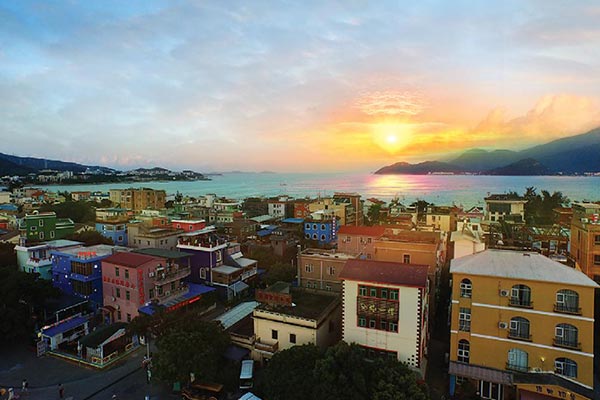
With breathtaking natural views, Dapeng Peninsula, located to the east of Shenzhen, is undergoing rapid development in its green industries.[Photo provided to China Daily]
“The whole race is very pleasant and relaxed. The experience is unique. When I finish, I take my family to enjoy the area’s fresh seafood,” he said.
According to statistics by the administration of Dapeng, its air quality is the best in the city.
The air quality in Dapeng was measured as “excellent”, meaning an AQI below 50, for 356 days last year.
The concentration level of PM2.5, a fine air particulate that is dangerous to the health if inhaled, was lowered by 13.3 percent year-on-year to 26 micrograms per cubic meter in Dapeng last year, which is near the air standards of the world’s leading ecological cities.
Shenzhen also boasts some of the cleanest air among China’s first-tier cities.
While its GDP has grown steadily, its smog-filled days dropped from 187 days 10 years ago to 35 days last year.
The concentration of PM2.5 declined from 62 micrograms per cubic meter more than 10 years ago to 29.8 micrograms per cubic meter last year.
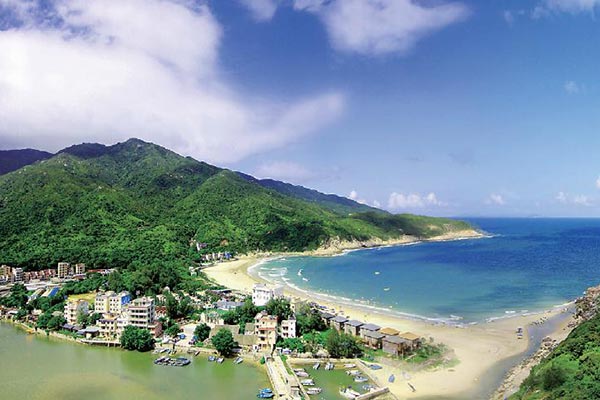
With breathtaking natural views, Dapeng Peninsula, located to the east of Shenzhen, is undergoing rapid development in its green industries.[Photo provided to China Daily]
Developing industry
It has been an universal problem that the economic development has been achieved at the expense of the environment at present or in the past, but the Shenzhen government tried to avoid it.
The Shenzhen government set up a functional district to manage Dapeng Peninsula on Dec 30, 2011, and issued a policy for it to be evaluated by measures other than GDP performance, which is different from nine other districts in Shenzhen.
“Dapeng new district should prioritize environmental protection, which is why we have not assigned any economic quota, especially GDP growth, to it,” said Mayor Xu Qin.
“Any industry that could negatively impact the ecology of Dapeng Peninsula or destroy the environment should be removed.”
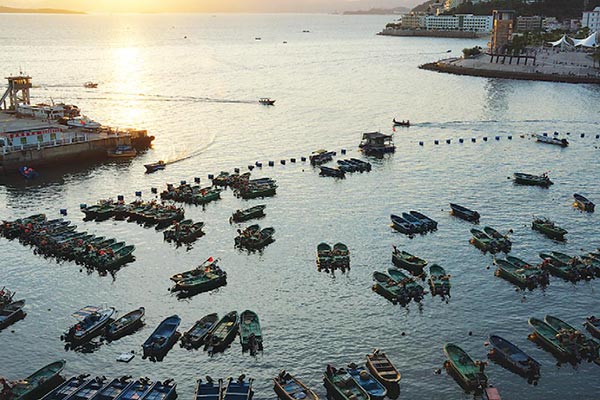
With breathtaking natural views, Dapeng Peninsula, located to the east of Shenzhen, is undergoing rapid development in its green industries.[Photo provided to China Daily]
The new district also has a critical mission of exploring a green and low-carbon economic development model that will include restoring polluted environments, developing and protecting marine resources and fostering an ecologic culture.
One of the district’s major goals is to develop into a world leading coastal tourism destination.
Despite Dapeng’s rich natural resources, tourism in the area is vastly underdeveloped.
Wang Jingdong, the top leader of Dapeng new district, said tourism projects in Dapeng must be of high quality while being friendly to the environment.
He said the district’s departments are working on proposals or are in talks with the world’s leading theme parks, such as LEGOLAND Parks, Universal Studios and Nickelodeon Universe.
The district government also signed a cooperative agreement with Shenzhen Agricultural Products Co Ltd, a State-owned listed company, at the end of last year to build an agricultural park for residents and visitors to experience what farming is like.
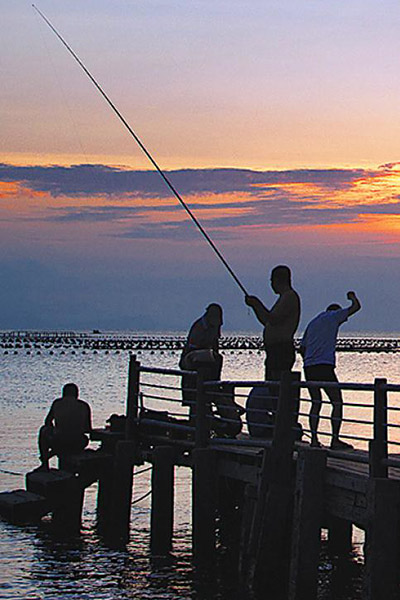
Fishing is a popular activity in Dapeng Peninsula.[Photo provided to China Daily]
Wu Zhong, one of the city’s legislators, said the tourism industry in Dapeng should have a long-term outlook, improve services and consider building an aquarium or an international conference center.
Other legislators have said that the new district should introduce more high-end international hotels to diversify the area’s hospitality sector.
Currently, small guesthouses dominate the sector, with just a few five-star hotels under construction.
Apart from the tourism industry, the district government is also prioritizing the marine industry, with the area’s long coasts and deep sea environment creating numerous opportunities.
With its subtropical climate, Shenzhen has an average temperature of about 22 C all year round, with summers sometimes as long as six months.
In January, the Dapeng district government signed a framework cooperation agreement with Shenzhen Qianhai International Boat & Yacht Exchange Center to set up headquarters in Dapeng and provide import and export services for yachts in Hong Kong, Macao, Guangdong province and other bayside locations in the Asia-Pacific region.
The exchange center will also work together with the government to make Dapeng a headquarters for the world yacht industry.
It’s expected to build an industry that could produce an output of more than 10 billion yuan a year in the near future, according to industry insiders.
In a bid to explore better ways of balancing the environmental protection and economic development, environmentalists, scholars and government officials from home and abroad will gather in Dapeng for an international forum on ecological civilization from April 16 to 17.
Their topics will touch upon the development of marine resources and ecological protection, comprehensive resolutions for the urban environment of the bay areas.
